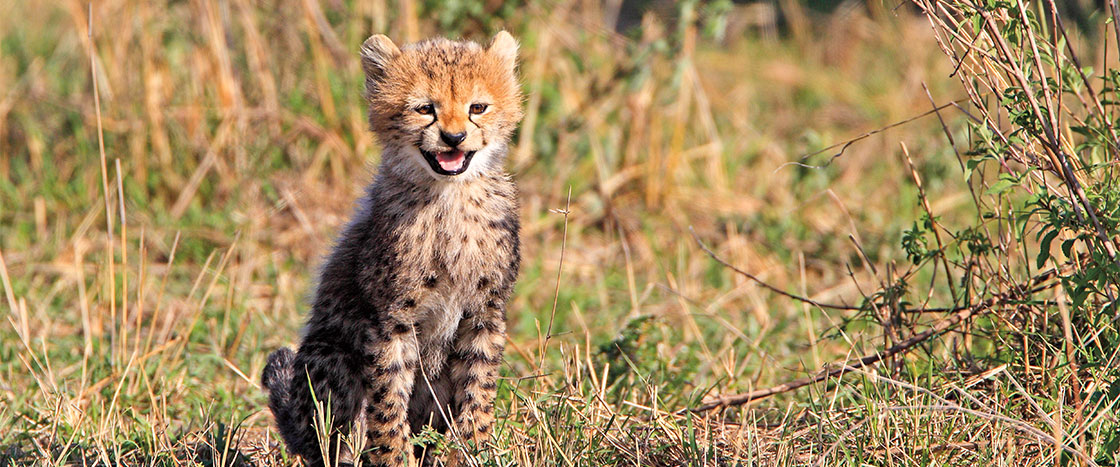JIM MCMAHON/MAPMAN R
Wild cheetahs live in Africa. They are endangered. That means there are not many of them left in the world.
Wild cheetahs live in Africa. There are not many of them left in the world.

You’re going to read an article about a cheetah. Here are five facts to know first.
1) Not many cheetahs are left.
1) There are not many cheetahs in the world.
JIM MCMAHON/MAPMAN R
Wild cheetahs live in Africa. They are endangered. That means there are not many of them left in the world.
Wild cheetahs live in Africa. There are not many of them left in the world.
2) Zoos are helping cheetahs
2) Zoos are helping cheetahs
ZOOLOGICAL SOCIETY OF SAN DIEGO
Some cheetahs live in zoos. The zoos care for the cheetahs.
Some cheetahs live in zoos. People take care of them.
3) Cheetah cubs need each other
3) Cheetah cubs need each other
F1ONLINE DIGITALE BILDAGENTUR GMBH/ALAMY STOCK PHOTO
A mother cheetah can have six cubs. The cheetah babies play, cuddle, and teach each other how to be cheetahs.
A mother cheetah can have six cubs. The babies play. They cuddle. They teach each other.
4) It's hard for cubs that are alone
4) It’s hard for cheetah cubs to be alone.
PHILIP MUGRIDGE/ALAMY STOCK PHOTO
Cheetah cubs are shy and nervous. That is a problem when they don’t have brothers or sisters.
Cheetah cubs are shy and nervous. That is a problem when they don’t have brothers or sisters.
5) Dogs are great friends to cheetahs.
5) Dogs are great friends.
MARK DUMONT/THE CINCINNATI ZOO
Dogs can help cubs learn how to play. They can give the cubs love. That helps the cheetahs live and grow. Dogs and cheetahs are friends at some zoos in our country.
Dogs can help cheetahs learn how to play. They give cheetahs love. Dogs and cheetahs are friends at some zoos.
About the Article
Science Focus
Endangered animals; Animal families
GET READY FOR TEXT-TO-TEXT CONNECTIONS!
1. BEFORE READING
2. READ THE ARTICLE (10 MINUTES)
3. AFTER READING (3 MINUTES)
Notice Nosey! (3 minutes)
ELA Focus: Key Details (20 minutes)
ELA Focus: Comprehension (5-10 minutes)
ELA Focus: Writing Facts About Me (20 minutes)
Enrich the Learning: Paired Text